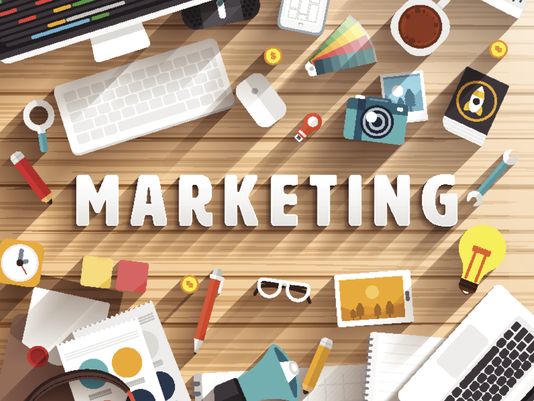 Leverage AI to Improve Marketing and Grow Your Business Exponentially
Leverage AI to Improve Marketing and Grow Your Business Exponentially
Before we get into the nitty-gritty of how to leverage AI to improve your marketing efforts, I want to discuss how important the AI industry is and why it’s imperative that you embrace it.
Despite the naysayers and all the controversy, you won’t believe how massive the AI market is getting!
By 2024, it was already worth a whopping $45 billion – and that’s crazy growth!
But what really gets me is that almost 70% of our friends in Gen Z are already using these AI tools. That’s a huge shift in how people use technology. And get this – by the end of 2025, it’s predicted that almost 100 million new jobs will be created just because of AI! That’s wild! But it should reassure you that contrary to the idea of AI taking all the jobs, it’s really adding jobs. In fact, technology usually creates 1.5 jobs for every job it replaces. The main problem is that it’s hard for us to imagine what jobs there will be as technology replaces what we’re familiar with.
Do you remember what they taught us in school about the exponential growth of technology? It’s called Moore’s Law, and it’s real!
Essentially, it means that tech gets faster, smaller, cheaper, and more powerful every two years. And AI is riding that wave hard. With computing power doubling every couple of years, AI models can process more data, learn faster, and become more accurate. It’s like a snowball effect – the more powerful AI gets, the faster it improves itself, and the faster it makes new breakthroughs. It’s mind-boggling to think about, but it’s the reason we’re seeing AI advance at such an incredible pace. And it’s not slowing down anytime soon! When you leverage AI to improve your marketing, everything changes.
AI is changing the game for businesses all around the world, especially small businesses. It’s not just some fancy tech trend. It’s going to have a real impact on our lives. You must embrace it as much as possible because, as they say, “you can’t put the genie back in the bottle.” And in all honesty, why would we want to?
The impact of AI on online businesses is profound. It provides innovative tools and solutions that enhance operational efficiency, drive marketing initiatives, and elevate customer experience. For small businesses, leveraging AI has transitioned from just another option to an essential strategy. With 70% of marketing departments already utilizing AI, it would be a huge mistake not to embrace and unlock this technology’s potential.
Benefits of Using AI in Your Small Business
Here’s a closer look at the most important benefits of incorporating artificial intelligence as a small business owner:
Higher Conversion Rates
We already know that personalization leads to higher conversion rates. And your customers are more likely to engage with content when their preferences and needs are considered.
Think about it – AI lets you get inside your customers’ heads like never before. AI can suggest products and services based on past purchases, actions, or browsing history, significantly increasing the likelihood of a sale.
You can dig deep into their data and behavior patterns to figure out what really makes them tick. And let’s be real — many small businesses can’t afford to do that kind of analysis on their own.
But with AI, you can finally understand what drives your customers’ decisions and tailor your marketing efforts to speak directly to the people who matter most.
It’s like having a superpower—you can craft personalized messages that resonate with your audience and watch your marketing efforts pay off in a big way. And the best part? The more you use AI, the more it learns and the better you get at targeting your message. It’s a cycle that keeps getting more effective and a real game-changer for small businesses.
Cost Efficiency
The other astonishing fact is that it’s inexpensive. You’ll reduce labor costs and minimize human error by automating routine tasks like customer service inquiries, data entry, and marketing campaigns. And let’s be real here – many small businesses don’t hire anyone to start with. Most small business owners, especially online owners, try to do everything themselves. Not necessarily because they want to but because that’s all they can do – due to budget.
Now, you can use AI-driven analytics to optimize spending by identifying the most effective marketing strategies. This allows you to allocate resources like your time more efficiently, giving you the freedom to invest more in growth and innovation.
Increased Engagement
You already know the secret to making your customers love you is delivering the right message at the right time. With chatbots and virtual assistants, you’ll provide real-time customer support, answering their questions and guiding them through the buying process.
It’s like having a personal shopper, but way more efficient! What’s more, AI can analyze all the social media chatter and customer feedback, helping you refine your messaging and strategies. It’s like having a direct line to your customers’ thoughts and feelings. Using AI to boost customer engagement builds stronger relationships and increases engagement, which means more loyalty and repeat business. It’s a win-win!
As AI continues to shape the future of business, it’s more important than ever to understand how it works. By understanding the ins and outs of AI, you’ll be able to harness its capabilities and make informed decisions that drive real results.
AI Basics – Everything You Must Know
What is AI anyway? Imagine having a super-smart sidekick that can help you easily tackle complex tasks. That’s basically what Artificial Intelligence (AI) is – a way to replicate human intelligence in machines so they can think, learn, and act independently. AI systems are like data superheroes, analyzing vast amounts of information, spotting patterns, making decisions, and adapting to new situations in real time. They’re designed to help us solve problems, automate tasks, and make our lives easier, all while getting smarter and more efficient over time.
Forms of AI: The Dynamic Quartet
Meet the four musketeers of AI, each with unique superpowers to revolutionize your marketing game.
Machine Learning (ML): The Data Detective
Consider ML a super-sleuth that digs through customer data, uncovering hidden insights and connections that help you personalize content, optimize campaigns, and drive growth.
Natural Language Processing (NLP): The Linguistic Genius
NLP is like having a multilingual genius who interprets the nuances of human language and can respond in kind. Use it to create chatbots that converse like humans, analyze sentiment with precision, and generate content that resonates with your audience.
Computer Vision: The Visual Visionary
Computer Vision is like having a photographic memory. It analyzes images and videos to uncover hidden customer preferences. It helps you create visual content that mesmerizes, converts, and retains your audience.
Robotic Process Automation (RPA): The Efficiency Expert
RPA is like having a team of super-efficient robots that automate repetitive tasks, freeing you to focus on high-leverage activities. Streamline data entry, reporting, and customer service interactions, and watch your productivity soar!
How AI Works in Marketing
- Data Analysis and Insights – AI tools quickly sift through data, identifying trends and patterns that might go unnoticed. By utilizing algorithms, these tools highlight information that helps you make data-driven decisions.
- Personalization – AI analyzes customer behavior and preferences by examining past interactions and data. This information allows you to create personalized customer experiences, delivering tailored content, product recommendations, and targeted advertisements. This level of personalization ignites a sense of belonging, fostering a deeper emotional bond between your customers and your brand.
- Predictive Analytics – AI algorithms analyze historical data to identify patterns that indicate future customer behaviors. By forecasting these behaviors, you can anticipate your customers’ needs, adjust your marketing strategies, and improve customer retention.
- Customer Engagement – AI-powered chatbots and virtual assistants provide real-time support, helping you engage customers effectively. These tools use natural language processing to understand customer queries and respond appropriately, guiding them through purchases or addressing concerns.
- Automation of Marketing Tasks – AI automates repetitive tasks like sending email campaigns or managing social media posts. By taking over these routine activities, AI allows you to save time and focus on more strategic and creative initiatives.
Key Terminology and Concepts: Leverage AI to Improve Your Marketing
- Data Training –– Teaching an AI model using large datasets. During training, the model learns to identify patterns and make predictions based on the data it processes. When you feed it rich, nuanced data, it’ll reward you with spot-on and actionable insights. The better the data, the better the AI—it’s a simple but powerful equation.
- Algorithms – A set of rules or instructions that an AI model follows to process data and make decisions. Different algorithms can be used for various tasks, such as classification, regression, and clustering. Common algorithms in AI include decision trees, neural networks, and support vector machines.
- Neural Networks – Imagine an algorithm wired like the human brain – Neural Networks in a nutshell! This cutting-edge tech is built around interconnected nodes (neurons) that work together to tackle complex tasks like image and speech recognition. In marketing, Neural Networks are like having a super-smart analyst who can dig through massive datasets to uncover hidden gems and automate decision-making. These networks can identify patterns, make predictions, and even automate tasks by learning from training examples.
- Natural Language Generation (NLG) – A subset of NLP that focuses on generating human-like text based on data inputs. NLG systems can create reports, summaries, and even creative content. NLG can automate content creation for blogs, product descriptions, and personalized emails.
- Sentiment Analysis—NLP techniques used to determine the emotional tone behind a series of words. This helps businesses gauge public sentiment regarding their brand or products. Marketers can use sentiment analysis to monitor customer feedback and adjust their strategies based on consumer emotions.
The game-changing potential of AI in marketing is undeniable. By tapping into its capabilities, you can drive tangible results that leave a lasting impact. You’ll be poised to respond precisely and quickly as customer needs evolve. The future of marketing is all about harnessing AI’s power to fuel growth, innovation, and customer-centricity—are you ready to lead the charge when you leverage AI to improve your marketing?
It all starts with a solid understanding of AI basics and knowing how to wield these tools to achieve your goals. When you do, you’ll unlock AI’s full potential and see its impact on your business. It’s time to take the reins and make AI work for you.
How to Craft AI Prompts to Get the Results You Want
Getting the most out of your AI tools starts with asking the right questions or crafting the perfect prompts. Think of prompts like a recipe for your AI tools—they’re the instructions that guide the AI in generating responses, analyzing data, or uncovering insights.
The better your prompts, the more accurate and actionable the results will be. It sets the stage for a successful marketing performance. Here’s why:
- Get Exactly What You Need – Clear prompts give AI direction, ensuring you get precise and relevant results. Vague prompts, on the other hand, can lead to a lot of wasted time and irrelevant responses.
- Save Time and Effort – With clear prompts, AI can generate usable results right off the bat, reducing the need for multiple iterations. That means you can focus on more important things – like growing your business!
- Tailor-Made Results—Specific prompts help AI zero in on the aspects of a topic that matter most to you. This is especially crucial in marketing, content creation, and research, where relevance is key.
- Context is Everything—By providing context, you help AI understand your unique situation and tailor its responses accordingly. This is mission-critical for applications like customer support, where understanding the user’s intent is crucial.
Now that we’ve covered the importance of crafting clear and specific prompts, it’s time to roll up our sleeves and get to work. In the next section, we’ll share some expert techniques for structuring prompts to help you get actionable results from your AI tools. From using natural language to leveraging specific formatting, we’ll explore the strategies you need to know to take your prompt-crafting skills to the next level.
So, let’s dive in and transform how you work with AI!
Techniques for Structuring Prompts That Yield Actionable Results
If you want to get actionable results from your AI tools, it starts with structuring your prompts clearly, concisely, and effectively. Here are some techniques to get you started on the right path:
- Speak Naturally
Use straightforward language and avoid unnecessary complexity. State exactly what you want the AI to do, like asking a colleague for help. Example: Instead of saying, “Can you tell me about marketing?” try “Summarize five effective digital marketing strategies for the fashion industry.”
- Set the Scene
Provide background information or context to guide the AI’s response. This helps it generate results that are more relevant to your specific needs. Example: Instead of “Generate a marketing plan,” say, “Create a marketing plan for a small online bookstore targeting young adults aged 18-25, focusing on trends in reading preferences, social media engagement rates, and recent purchase behaviors from our customer database.”
- Specify Your Output
Clearly state your desired format for the results and tone. This helps the AI understand how to structure its response, whether it’s a list, a paragraph, or a detailed report. Example: Instead of asking, “What are some benefits of yoga?” try, “List five benefits of yoga in bullet points, using a friendly and conversational tone suitable for a wellness blog.”
- Provide Illustrations and Data
Include specific examples and relevant data to illustrate what you want. This sets clear expectations for the AI and helps it generate more relevant responses. Example: Instead of saying, “Write a product description,” try, “Write a product description for a vegan protein powder that emphasizes its health benefits, flavor options, and key ingredients. Use this example from my other product for guidance: “Our organic berry smoothie blend combines antioxidant-rich berries with plant-based protein to fuel your day and satisfy your taste buds.” Also, highlight that the vegan protein powder contains 20g of protein per serving and is made from non-GMO ingredients like peas.
- Engage in Conversation
Don’t expect a single prompt to yield the insights you need. Instead, treat AI like an expert and engage in a collaborative dialogue. By asking follow-up questions and exploring topics from different angles, you’ll uncover more nuanced and valuable information that helps you achieve your goals. Example: After asking for a summary of marketing strategies for a small online bookstore, you might follow up with, “Can you explain how each strategy can be implemented to effectively target young adults aged 18-25, particularly focusing on their reading preferences and social media habits?”
- Identify and Correct Errors
AI can occasionally produce information that is incorrect, outdated, or misaligned with your intentions. When this happens, don’t hesitate to point out the errors. Correcting the AI’s response will refine the output and guide the tool in better understanding your requirements in future interactions. Example: If the AI incorrectly states that digital marketing strategies are only effective on social media, you might respond with, “Digital marketing strategies also encompass email marketing, content marketing, and SEO, beyond social media.” This helps the AI to expand its focus and deliver a more accurate response.
- Keep it Manageable
Narrow the focus to ensure the AI’s response is manageable and relevant. This is especially useful when dealing with broad topics. Example: Instead of “Explain climate change,” try “Explain the top 3 causes of climate change in two paragraphs.”
By incorporating these techniques into your prompt crafting, you’ll be well on your way to getting actionable results from your AI tools. Now, let’s look at a few more examples.
Examples of Well-Structured Prompts to Leverage AI to Improve Your Marketing
Content Creation
“Write a 300-word blog post on the benefits of remote work. Include three key advantages—flexibility, productivity, and work-life balance—and conclude with a strong call to action. Use this example for tone: “Remote work empowers you to choose your environment, leading to greater focus and satisfaction.”
Market Research
“Provide a comparative analysis of the top three social media platforms for small businesses, focusing specifically on user demographics and advertising options. Use bullet points for clarity and refer to this example for structure: “1. Facebook: Primarily used by ages 25-45; strong advertising tools available.”
Customer Engagement
“Draft an email newsletter for the launch of a new fitness app. Include a promotional offer of 20% off the first subscription and a clear call to action encouraging users to download the app. Use this previous newsletter (attached) as a guide: “Don’t miss out! Sign up today to get started on your fitness journey with us!”
Product Development
“Generate a list of ten unique features for a smartwatch aimed at fitness enthusiasts. For each feature, provide a brief explanation of its benefits. Follow this structure: “Feature 1: GPS tracking for real-time location and route mapping.”
Social Media Strategy
“Create a week-long social media content calendar for a vegan restaurant. Include daily post ideas, suggested captions, and relevant hashtags. Structure it like this: “Monday: Post a colorful photo of a salad with the caption: “Fresh and delicious! #VeganEats #HealthyLiving.”
Crafting effective AI prompts is essential for generating high-quality, actionable results. Being clear, specific, and providing context maximizes the effectiveness of your interactions with AI tools.
Use the techniques outlined here to structure your prompts thoughtfully. You’ll find that the quality of responses improves significantly, enabling you to achieve your goals more efficiently.
As you move forward, remain adaptable and proactive in your approach. Integrating AI involves reimagining how you connect with your customers and meet their needs in real time. Combining automation, engagement, and personalization will soon create a marketing strategy that drives results and builds lasting relationships with your audience. With AI at your side, you’ll harness the power of data to inform your decisions, refine your messaging, and enhance customer experiences.
NOTE: The ONLY training I am recommending on this topic of AI (Artificial Intelligence) for marketers, content creators, and others online is from people I know and trust. Denise Wakeman and Andy O’Bryan have created the AI Success Club and I am excited to be learning everything there is to know on this topic, as well as how to utilize it for my business from these two thought leaders.
Remember, when you leverage AI to improve your marketing it is as good as your insights and creativity, which shape its effectiveness. The more you invest in understanding and utilizing AI, the more effectively you’ll navigate the complexities of the market. Doing so will position your business for sustained growth and success in an ever-evolving space.
I’m Wall Street Journal and USA Today bestselling author, independent publisher, and serial entrepreneur Connie Ragen Green and would love to connect with you. When you leverage AI to improve your marketing, anything is possible. Perhaps you’d be interested in being mentored by me in a safe and collaborative small group environment
with my Monthly Mentoring Program.








Leave a Reply